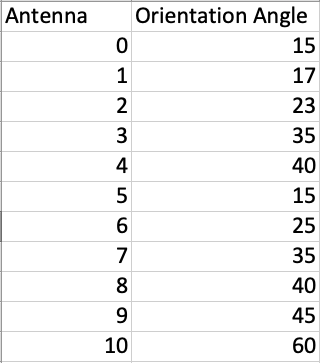Overview:
- The contents of a pandas.Series instance can be transformed based on a mathematical function.
- By calling Series.apply() method and passing either a Python function or a numpy universal function(ufunc) as the value for func parameter, the values present in the series are transformed by the applied/passed-in function.
- The Series.trasnform() method is more versatile through accepting a function name, a list of function names, or a function that works with Series.Apply().
Example - Using Series.apply():
- The example Python code reads a CSV file (antennas.csv) and loads the columns into a DataFrame.

- The column containing the orientation angles is selected into a Series and apply() is called by passing the math.cos() function as the parameter. This returns a new pandas.Series with cosine values of the orientation angles.
|
# Example Python program to transform the values # of a pandas.series instance by applying a function import pandas as pds import math
# Load the data from the cake.csv dataFile = "./Antennas.csv"; df = pds.read_csv(dataFile); series = df["Orientation Angle"]; cosineValues = series.apply(math.cos); print(cosineValues); |
Output:
|
0 -0.759688 1 -0.275163 2 -0.532833 3 -0.903692 4 -0.666938 5 -0.759688 6 0.991203 7 -0.903692 8 -0.666938 9 0.525322 10 -0.952413 Name: Orientation Angle, dtype: float64 |
Example - Using Series.transform():
When more than one function is passed to transform() the result is a pandas.DataFrame whose columns are produced by the functions passed in.
|
# Example Python program to transform the values # of a pandas.series instance by applying multiple # functions import pandas as pds import math
def radius_squared(radius): return math.pow(radius, 2);
def radius_cubed(radius): return math.pow(radius, 2);
# Radius of the antennas in meters radius_Vals = (5, 5.5, 7, 7.5, 9); series = pds.Series(radius_Vals); radiusTakenToPower = series.transform([radius_squared, radius_cubed]); print(radiusTakenToPower); print(type(radiusTakenToPower)); |
Output:
|
radius_squared radius_cubed 0 25.00 25.00 1 30.25 30.25 2 49.00 49.00 3 56.25 56.25 4 81.00 81.00 <class 'pandas.core.frame.DataFrame'> |